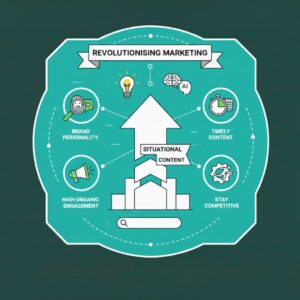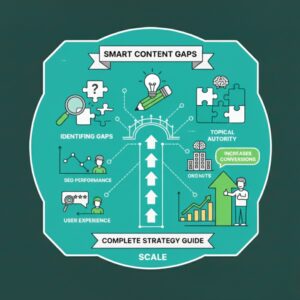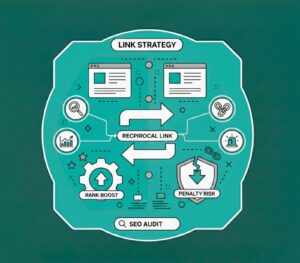How OpenAI’s Instant Checkout Is Changing E-Commerce & What It Means for Marketers
Blogs | Category
Written By: Lauren Davison
Introduction
OpenAI isn’t just a chatbot anymore. With the OpenAI Instant Checkout, shopping inside ChatGPT is now real. Imagine asking, “What are the best sneakers under $100?” and buying them right inside the chat, no website, no extra clicks. These might sound simple.
But this new feature isn’t just about convenience. It’s about how people will shop in the future. So, what does this mean for marketers and online stores? How can businesses prepare for this big change? Let’s explore how the AI-powered checkout is reshaping e-commerce and why it matters to you.
Table of Contents
What Is Instant Checkout and Why OpenAI Launched It
Understanding the Feature
The OpenAI Instant Checkout feature turns ChatGPT into a full shopping assistant. A user can ask for a product, for example, “best running shoes under $100.” ChatGPT then shows a few top options, complete with images, prices, and short details. Once the user decides, they simply tap “Buy.”
No new tabs. No confusing checkout pages. Payments and shipping happen inside ChatGPT. The system uses e-commerce via AI chat, where conversations lead directly to purchases. It’s like talking to a smart store assistant who helps you find and buy what you want instantly.
This is part of a larger trend called conversational commerce, where chats become shopping experiences. It’s not just convenient; it feels natural. People already chat with AI for help, so why not shop with it too?
The Business Rationale Behind It
Why did OpenAI launch this? Because it’s the next logical step. ChatGPT already helps people plan, write, and learn. Now, it can also help them buy.
With OpenAI Instant Checkout, OpenAI moves beyond subscriptions and enters the e-commerce world. It’s building a future where AI doesn’t just recommend things, it helps complete the purchase too.
This idea fits a new model called Agentic Commerce, where the AI acts like a digital agent. It listens, finds options, and completes your order. For OpenAI, it means new income sources and stronger partnerships with merchants. For users, it means faster, easier shopping.
Key Partnerships and Roll-Out Details
Early Launch Partners
The first rollout of OpenAI Instant Checkout includes merchants from platforms like Shopify and Etsy. Soon, larger retailers like Walmart could join too.
This means you could soon ask ChatGPT for handmade candles or trendy hoodies and buy them right in chat through real stores. It’s part of OpenAI’s plan to make ChatGPT shopping mainstream.
For small sellers, this is big news. It lets them reach millions of users without building new apps or websites. For customers, it’s smooth, quick, and reliable.
How It’s Powered – The Agentic Commerce Protocol
Behind the scenes, the Agentic Commerce Protocol (ACP) makes all this work. ACP connects ChatGPT with payment systems like Stripe. It helps merchants link their stores directly to ChatGPT.
When you buy something, ACP manages payment and order flow. But the merchant still controls inventory, shipping, and customer support. So, businesses keep ownership of their process while users enjoy a simple AI-powered checkout.
Think of ACP as the invisible bridge that connects chat to commerce. It ensures safety, speed, and reliability, three things users expect from online shopping.
Implications for Marketers and Brands
Discovery to Purchase Collapses
Before, the buying journey had many steps: search, browse, add to cart, pay, and confirm. Now, with OpenAI Instant Checkout, it’s chat, buy, and done.
This short path means marketers must rethink their funnel. Instead of driving traffic to websites, they should focus on showing up in chat recommendations.
To do that, brands must optimise for e-commerce via AI chat. Their products need clear data, friendly descriptions, and strong visibility in AI-driven listings. The faster users can see and buy, the higher the chance of conversion.
New Metrics & Channels to Monitor
Old metrics like page visits and bounce rates may not matter as much when purchases happen inside ChatGPT. Now, marketers should track new numbers, chat-based conversions, AI recommendations, and single-click sales. These show how people interact in conversational settings.
Ad budgets may shift, too. Instead of focusing on web ads, marketers might invest in improving their AI visibility. It’s like SEO, but for conversations instead of search engines.
What This Means for Content Strategy
Content must change to fit this new world of conversational commerce. Users ask questions naturally, so your brand’s copy must sound natural too. Think about how people talk. They don’t type “low-cost water bottle 500ml.” They ask, “What’s a good reusable water bottle for school?”
Brands must write in that same voice. Clear, chat-friendly language helps ChatGPT pick your products for recommendations. Also, ensure your OpenAI e-commerce integration includes rich product data with tags, keywords, and schema. The better your data, the better your visibility.
Challenges, Risks & What to Watch Out For
Behavioural Gaps & Adoption Barriers
Not everyone will jump into chat-based shopping right away. Some people like browsing pictures or comparing items side-by-side.
While AI-powered checkout is fast and smart, it may take time to gain full trust. Brands should continue offering traditional e-commerce while exploring chat integration. For now, think of this as an extra sales channel, not a total replacement.
Platform Ownership and Merchant Control
A key question for brands: who owns the customer relationship?
With OpenAI Instant Checkout, the purchase happens inside ChatGPT. OpenAI is the middle layer between buyer and brand. That can limit how much customer data merchants get.
Businesses must plan how to maintain loyalty, post-sale support, and brand voice. The best approach is to treat ChatGPT as a partner, not a competitor, a new touchpoint for customer engagement.
Global Roll-out & Regulatory Considerations
At the moment, OpenAI Instant Checkout is available only in select regions, mostly in the U.S. But expansion is coming soon.
This brings challenges like international taxes, privacy laws, and payment rules. Each country has its own e-commerce standards. Brands planning global sales through ChatGPT must understand and follow them.
When OpenAI expands worldwide, it’ll open huge opportunities, but preparation and compliance will be key.
Getting Ready for Instant Checkout – Actionable Steps for Marketers
Ensure Product Data & Schema Are Up-to-Date
The foundation of AI commerce is clean, structured data. Make sure your product feeds are correct and updated. Include prices, images, and details that ChatGPT can easily read.
The OpenAI Instant Checkout feature relies on accurate metadata. If your data is messy, your products might not show up in chat recommendations.
Use clear descriptions and well-tagged attributes. That’s how the system knows when to show your item.
Prepare Conversational Copy & Voice Queries
ChatGPT works through natural conversation. Your product content must sound natural, too. Instead of keyword-heavy sentences, write like you’re answering a question.
For example:
Instead of “Affordable running shoes for all sports,” write “Looking for good running shoes that fit any sport?”
This approach improves visibility in conversational commerce and makes it easier for AI to recommend your brand. Practice writing short, friendly sentences. Remember, users are chatting, not reading long blogs.
Test & Monitor Conversion Channels
When you join OpenAI e-commerce integration, make sure your analytics systems can track sales from chat. Traditional site-based tracking won’t cover these new conversions.
Work with your data team to add chat-specific metrics. Track how often users buy directly through ChatGPT. Watch which queries drive conversions. These insights will guide how you adjust product visibility, copy, and engagement.
Consider Early Adoption Benefits
Being early often means visibility. OpenAI is still expanding its shopping features. Brands that adopt AI-powered checkout now can stand out in the early phases.
You’ll also get a head start on understanding what works in this new model. Early data helps improve your strategies before competitors join in.
Ask yourself: Does your brand fit pilot programs? Can your team support AI commerce integration? If yes, this could be your chance to lead the change.
Conclusion
The OpenAI Instant Checkout isn’t just another tech update; it’s the start of a new shopping era. It turns simple chats into powerful purchase moments. For marketers, this means learning to sell where people talk, not just where they click.
Brands that prepare early, with better product data, conversational content, and AI-ready strategies, will win in this space. At Midland Marketing, we help brands prepare for this next wave of digital commerce.
From optimising data feeds to building AI-friendly content strategies, our experts can guide your brand through the world of AI-powered checkout and beyond. Ready to adapt and lead? Connect with Midland Marketing today and bring your brand to the front of the AI shopping revolution.
Frequently Asked Questions
What is OpenAI Instant Checkout?
OpenAI Instant Checkout lets you buy items inside a ChatGPT chat. You ask, see options, and tap to buy. No switching to another site.
How does OpenAI Instant Checkout work?
It links ChatGPT to store systems. The Agentic Commerce Protocol (ACP) talks to payment services like Stripe. ACP sends the order to the seller, and the seller ships the item.
What makes OpenAI Instant Checkout different from normal online shopping?
Traditional shopping needs many steps. You search, open pages, add to cart, then pay. With this feature, the chat does most of that work. You get a faster path from question to purchase.
What is the Agentic Commerce Protocol (ACP)?
ACP is the set of rules that lets chat apps act like stores. It helps ChatGPT request product info, handle payment, and pass orders to merchants. ACP keeps the flow smooth and standard.
How can marketers use OpenAI Instant Checkout?
Keep product info clean and current. Use short, clear product lines that sound like real questions. Track chat buys and test simple messages to see what sells. Try small experiments first.
Is ChatGPT shopping safe?
Payments go through trusted services (for example, Stripe). Data and payments are handled with security tools. Still, check your payment and privacy settings before you buy.

Written by - Lauren Davison
Introducing Lauren – one of our content writers who has a flair for SEO and creative strategy!
With a Master’s Degree in Creative Writing, Lauren has niched down into SEO and content writing.
Outside of work, she loves watching the darts, reading and the pub on the weekend.
Want some more?
Latest Insights & News

Revolutionising Marketing: The Rise of Situational Content Strategies
Situational content strategies involve tailoring content to specific moments, contexts, or audience behaviours. By aligning content with real-time trends, seasonal needs, and user intent, brands can increase relevance, improve engagement, and strengthen SEO performance.

Smart Ways to Identify and Fill Content Gaps Fast: A Complete Strategy Guide
Content gaps refer to missing information, unanswered questions, or underserved topics in your existing content. Identifying these gaps helps you create targeted, high-value pages that improve search visibility, satisfy user intent, and outperform competitors.

Reciprocal Links in SEO: Do They Still Boost Rankings or Risk Penalties?
For the keyword “reciprocal links SEO,” focus on explaining how reciprocal linking works today. Reciprocal links are not harmful by default, but Google can flag excessive or manipulative link exchanges. To stay safe, only exchange links when they are contextually relevant, natural, and valuable to users.




